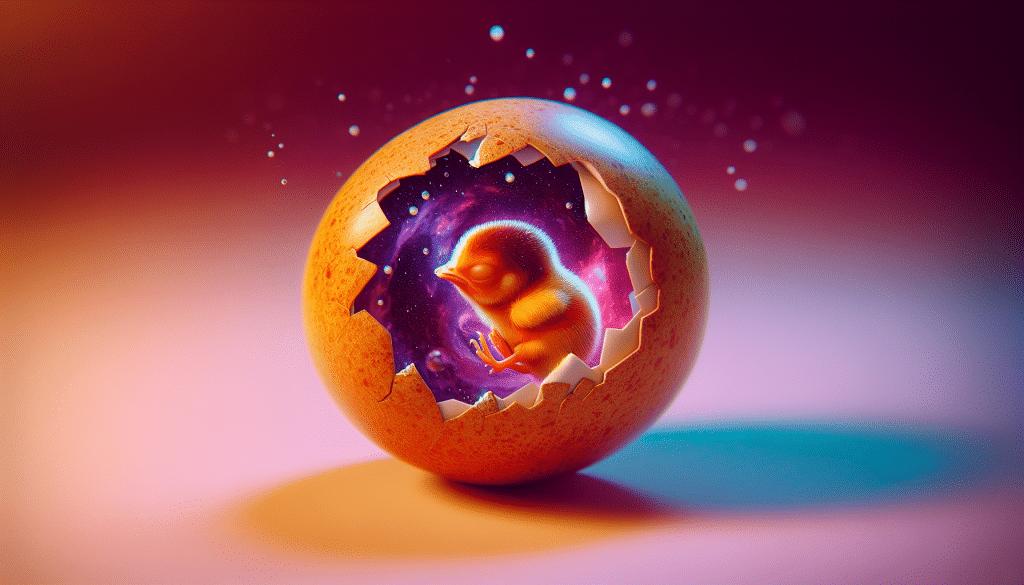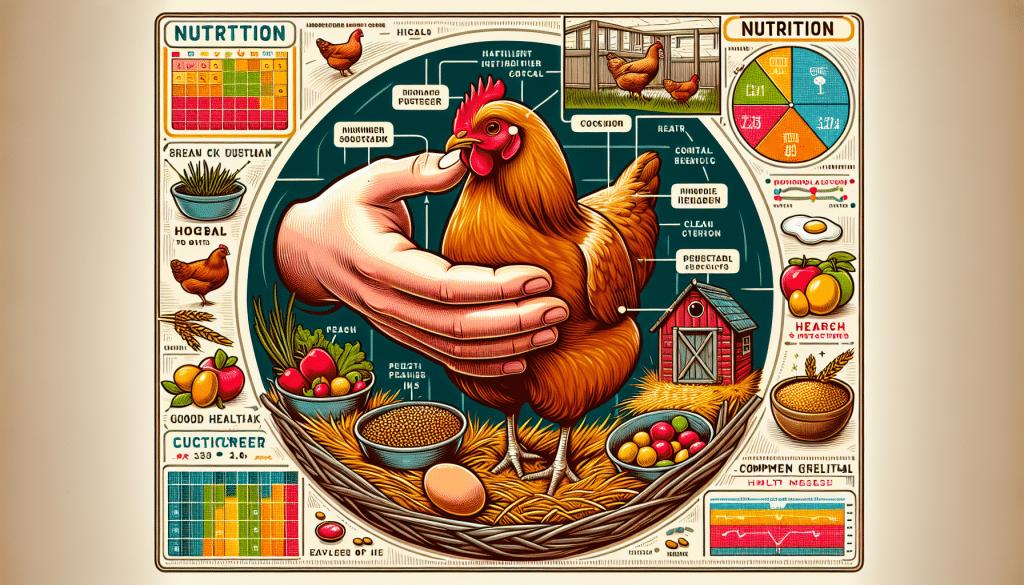So you’ve decided to try your hand at raising chickens and you want to start hatching your own chicks. But how do you know if the eggs you have are actually fertile? Well, determining whether a chicken egg is fertile or not is easier than you might think. In this article, we’ll guide you through a few simple methods to help you identify if the eggs in your nest are ready to hatch or just for breakfast. From candling to checking for blood spots, we’ll give you the lowdown on how to determine if a chicken egg is fertile.

Understanding Fertilization in Chickens
When it comes to understanding fertility in chickens, there are certain basics that you should be aware of. Factors such as the appearance, weight, and quality of the egg can provide valuable clues about its fertility. Additionally, misconceptions about chicken egg fertility are quite common and it’s important to address them. In this article, we will explore the various methods and techniques to determine the fertility of chicken eggs, including the candling method, the cracking method, and the incubation method. We will also discuss common fertility problems and ways to increase the fertility rate in your flock.
Basics of Chicken Reproduction
Before we dive into the details of determining egg fertility, let’s first understand the basics of chicken reproduction. Chickens have a unique reproductive system where the rooster mates with the hen, and the hen then lays fertilized eggs. Fertilization occurs when the rooster’s sperm meets the hen’s egg inside her reproductive system. The fertilized egg then undergoes a process called incubation, during which the embryo develops and eventually hatches into a chick.
Factors Affecting Fertility in Chickens
There are several factors that can affect the fertility of chicken eggs. Inadequate mating is one common issue, where the rooster may fail to properly mate with the hen. Poor nutrition can also impact fertility, as a balanced diet is crucial for the production of healthy eggs. Stressful environmental conditions, such as extreme temperatures or overcrowding, can negatively affect fertility as well. Finally, diseases and infections can significantly reduce the fertility rate in chickens.
Common Misconceptions about Chicken Egg Fertility
There are several misconceptions surrounding chicken egg fertility that may lead to confusion. One common misconception is that a double yolk egg is always fertile. While double yolks can occasionally be fertile, it is not a guarantee. Another misconception is that small eggs are less likely to be fertile. The truth is, egg size does not determine fertility. Lastly, some people believe that a blood spot on the yolk indicates fertility. However, blood spots occur due to the rupture of a blood vessel during egg formation and are not an indicator of fertility.
Preliminary Checks for Fertility
Before using more advanced techniques to determine egg fertility, there are some initial checks you can perform. One of the first things to consider is the appearance of the egg. Fertile eggs tend to have a more rounded shape, while infertile eggs may appear more oblong. The weight and size of the egg can also provide clues about its fertility. Fertile eggs usually weigh slightly more and have a larger size compared to infertile ones. Lastly, examining the quality of the eggshell is important. Healthy, fertile eggs have a strong and intact shell, while infertile eggs may have weak or damaged shells.

Understanding the Egg Anatomy
To better understand the process of determining egg fertility, it is essential to grasp the anatomy of a chicken egg. The yolk, located in the center of the egg, is a nutrient-rich food source for the developing embryo. Surrounding the yolk is the egg white, known as the albumen, which provides protection and cushioning for the yolk. In a fertile egg, there are additional structures present, such as the blastoderm and the blastodisc, which are important indicators of fertility.
Candling Method
The candling method is a popular technique used to determine egg fertility. Candling refers to shining a bright light through the eggshell to examine its contents. This method allows you to observe the internal structures of the egg and identify signs of fertility. To candle an egg, simply hold a bright light source against the eggshell and observe the contents. By doing so, you can locate the blastoderm, a circular, opaque area in a fertile egg that indicates the development of an embryo.
Identifying Fertile Eggs through Candling
When candling an egg, it is important to know what to look for to identify fertility. Fertile eggs will show a clear distinction between the yolk and the blastoderm. The blastoderm appears as a dark, circular spot on the surface of the yolk. It may also show veins spreading out from the center, indicating embryonic development. Infertile eggs, on the other hand, will not display the distinct circular spot and will typically show a uniformly translucent yolk.
Understanding the Blastoderm and Blastodisc
To further understand the process of determining egg fertility through candling, it is important to distinguish between a blastoderm and a blastodisc. A blastoderm is the stage of development where the embryo is present in the egg. It appears as a dark spot on the surface of the yolk during candling. In contrast, a blastodisc is an unfertilized egg and appears as a uniformly translucent yolk without any signs of embryonic development.
The Cracking Method
The cracking method can also be used to determine the fertility of an egg. It involves carefully cracking open the egg and observing the contents. This method is particularly useful when candling is not feasible or if you prefer a more hands-on approach. To crack an egg for fertility check, gently tap the egg against a hard surface and carefully open it. Observing the internal components of the egg can provide insights into its fertility.

When to Use the Cracking Method
The cracking method is best utilized during the early stages of incubation. Eggs are generally more fragile during this time, and the developing embryo is less likely to be harmed during the cracking process. It is important not to crack an egg too late in the incubation process, as it could harm the developing chick. It is recommended to use this method within the first week of incubation.
What to Look for in a Cracked Egg
When cracking open an egg to determine fertility, there are several indicators to look for. A fertile egg will show clear signs of development, such as the presence of a white string-like structure called a chalaza. Additionally, you may observe visible blood vessels and a small, dark speck, which indicates the development of an embryo. Infertile eggs, on the other hand, will typically show a uniformly translucent yolk without any signs of development.
Incubation Method
The incubation method is another way to determine egg fertility and is commonly used when hatching chicks. Incubation involves providing optimal conditions for the egg to develop and hatch. During the incubation period, you can monitor the egg for signs of fertility. By observing changes in the egg’s appearance and performing periodic inspections, you can gain insight into its fertility status.
How to Incubate a Chicken Egg
To incubate a chicken egg, you will need an incubator. Set the incubator to the recommended temperature and humidity levels for chicken eggs, which is usually around 99.5 degrees Fahrenheit (37.5 degrees Celsius) and 50-60% humidity. Place the eggs in the incubator and ensure regular turning to prevent the embryo from sticking to the shell. Regularly monitor the eggs during incubation and look for signs of development, such as blood vessels visible through the shell and movement within the egg when gently rotated.
Signs of Fertility during Incubation
During the incubation period, there are several signs that indicate fertility. As the embryo develops, you may observe blood vessels spreading out from the center of the egg and a dark spot representing the growing embryo. The presence of movement within the egg when gently rotated is also a positive sign of fertility. It is important to note that not all eggs will hatch successfully, even if they initially showed signs of fertility.
Common Fertility Problems
There are several common fertility problems that may occur in chickens. Inadequate mating can be a result of factors such as a lack of roosters, aggressive roosters, or incompatibility between the rooster and hens. Poor nutrition can negatively impact fertility by affecting egg quality and reproductive health. Stressful environmental conditions, such as extreme temperatures or overcrowding, can also lower the fertility rate. Additionally, diseases and infections, such as reproductive tract infections, can severely reduce fertility in chickens.
Increasing the Fertility Rate
If you are experiencing low fertility in your flock, there are several steps you can take to increase the fertility rate. Optimizing the chicken’s diet by providing a balanced and nutrient-rich feed can greatly enhance reproductive health and egg quality. Creating proper housing and environmental conditions, such as ensuring adequate space, ventilation, and avoiding extreme temperatures, can also promote higher fertility rates. Lastly, selecting a healthy and vigorous rooster for mating can significantly boost fertility.
Food Safety Considerations
When dealing with chicken eggs, it is important to consider food safety. Proper handling of eggs is crucial to prevent the spread of bacteria such as Salmonella. Always wash your hands before and after handling eggs, and avoid cross-contamination by keeping eggs separate from other foods. Ensure that eggs are stored in a cool and clean environment to maintain freshness and reduce the risk of bacterial growth. If you have any concerns regarding the safety of eggs, it is advisable to consult with a local food safety authority.
Handling QnA
Q: How can I safely handle eggs during the fertility check process? A: To safely handle eggs during the fertility check process, it is essential to wash your hands thoroughly before and after handling eggs. This helps reduce the risk of bacteria transfer. Make sure to handle the eggs delicately to prevent any damage to the fragile shells.
Q: How should I store eggs before conducting a fertility check? A: It is recommended to store eggs in a cool and clean environment, ideally in a refrigerator. Ensure that the eggs are stored in their original cartons or in covered containers to prevent absorption of strong odors from other foods.
Q: Are there any potential risk factors associated with determining egg fertility? A: While determining egg fertility itself does not pose significant risks, it is important to be aware of potential food safety concerns. Bacterial contamination, such as Salmonella, can occur if eggs are mishandled or consumed raw. Practicing proper food safety measures, such as thorough cooking and avoiding cross-contamination, can help minimize these risks.
In conclusion, understanding the fertility of chicken eggs is crucial for successful breeding and hatching. Through methods such as candling, cracking, and incubation, you can gain valuable insights into the fertility status of eggs. Addressing common fertility problems, optimizing nutrition and environmental conditions, and selecting a healthy rooster can help increase the fertility rate in your flock. By ensuring food safety considerations, you can handle and consume eggs responsibly. Now that you have a comprehensive understanding of how to determine chicken egg fertility, you can confidently embark on your journey in chicken breeding and hatching.
Sources
- https://montanahomesteader.com/how-to-tell-if-a-chicken-egg-is-fertilized/
- https://www.onehundreddollarsamonth.com/how-can-i-tell-if-my-chicken-eggs-are-fertilized-without-cracking-them/
- https://www.backyardchickencoops.com.au/blogs/learning-centre/incubation-how-to-tell-if-an-egg-is-fertile-or-infertile


